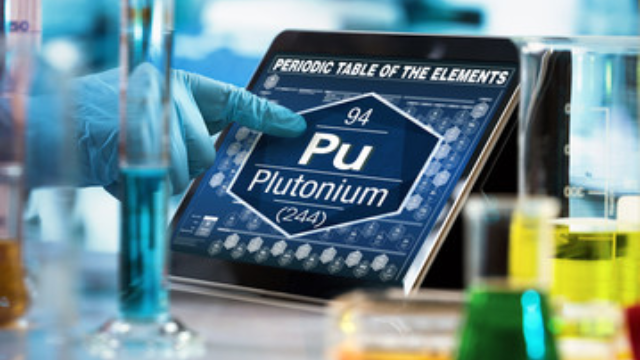You’ve likely heard of plutonium, but do you know the dangers it poses? It’s not just a science fiction trope; it’s a real and potent element. From its radioactive nature to its ecological impact, health risks, role in nuclear weapons, and disposal difficulties, plutonium has numerous downsides. So let’s dig into these issues and shed some light on why we can’t take plutonium’s disadvantages lightly.
Plutonium’s Radioactive Nature
You might not realize it, but plutonium’s radioactive nature is one of its biggest disadvantages. It’s not just about the danger it poses to human health and the environment; the challenge of radiation containment also plays a significant role. The process of plutonium decay, which involves the emission of harmful particles, requires advanced shielding mechanisms to prevent radiation leakage.
Plutonium’s radioactive decay is relentless, continuous, and unforgiving. It’s a persistent challenge that doesn’t fade away. You can’t simply put it in a box and forget it. The containment structures need constant monitoring and maintenance, which demands substantial resources and expertise.
Moreover, the decay products of plutonium are also radioactive, leading to a complex, multi-layered radiation containment problem. It’s like a never-ending chain reaction of problems that you need to tackle. You’re dealing with an element that has a half-life of thousands of years, meaning it remains hazardous for an extended period.
Therefore, while plutonium might be a potent source of energy, its radioactive nature and the issues surrounding radiation containment make it a double-edged sword. It’s a constant reminder that even the most powerful tools come with significant disadvantages. You need to balance the benefits against the risks and challenges.
Ecological Impact of Plutonium
Beyond the relentless radiation issue, another major disadvantage of plutonium is its detrimental impact on our ecosystem. Plutonium pollution, the result of nuclear weapons tests, accidents, and waste disposal, can have a long-lasting and widespread effect on our environment.
| Environmental Impact | Explanation |
|---|---|
| Soil Contamination | Plutonium in the soil can affect plant growth and, by extension, the entire food chain. |
| Water Contamination | Plutonium in water sources can harm aquatic life and contaminate drinking water. |
| Atmospheric Pollution | Airborne plutonium particles can spread over large areas, affecting air quality and human health. |
Bioaccumulation concerns arise when plutonium enters the food chain. It’s not readily eliminated from the body, so it accumulates in tissues, posing a risk to animals and humans alike. The more you’re exposed, the greater the risk.
Sadly, the cleanup of plutonium-contaminated sites is a complex and costly process. This is due to plutonium’s long half-life and its ability to bind with organic material in the environment.
Health Risks Associated With Plutonium
In addition to its ecological drawbacks, there are numerous health risks you’ll face when exposed to plutonium. Primarily, these hazards result from plutonium inhalation and plutonium ingestion.
When you inhale plutonium, tiny particles lodge deep in your lungs. Over time, this radioactive element emits alpha particles that can damage lung tissue, leading to diseases like fibrosis or lung cancer. Moreover, plutonium can enter your bloodstream through the lungs, traveling to other organs and affecting them similarly.
Plutonium ingestion also poses a significant risk. Though less likely to be absorbed by the body when ingested, it’s still hazardous. It can irradiate the lining of your stomach and intestines, potentially leading to gastrointestinal diseases and even cancers.
It’s also worth noting that the health effects of plutonium exposure are often delayed, sometimes not appearing until years after the event. In this context, the damage caused by plutonium is not only severe but also insidious. It’s crucial to understand these risks and strive for strict control and careful handling of this dangerous element, prioritizing safety above all.
Plutonium’s Role in Nuclear Weapons
Shifting focus to another serious disadvantage, let’s consider plutonium’s role in the creation of nuclear weapons. As a highly radioactive substance, plutonium’s potential for misuse is terrifying. It’s a key ingredient in the creation of atomic bombs, contributing significantly to weapon proliferation.
Consider the risks in the table below:
| Danger | Impact |
|---|---|
| Weapon proliferation | Global instability, potential for massive loss of life |
| Plutonium smuggling | Increased risk of nuclear materials falling into wrong hands |
Weapon proliferation is a real concern. The more nations have access to nuclear weapons, the higher the risk of a potential catastrophe. Plutonium smuggling further exacerbates this issue. Unregulated and often undetected, smuggling routes can divert plutonium into the wrong hands, potentially enabling terrorist organizations or rogue states to build nuclear weapons.
The devastating effects of nuclear weapons are well-documented. The potential for destruction and loss of life is unimaginable. Plutonium’s role in this grim scenario is undeniable. It’s one of the many reasons why we need to manage and regulate this element carefully to minimize the risk of a nuclear disaster.
The Difficulty of Plutonium Disposal
Often, you’ll find that, besides its potential misuse for creating weapons, disposing of plutonium presents another significant challenge. The disposal challenges of this element are not to be taken lightly. Plutonium has an incredibly long half-life, about 24,000 years, making its radioactive decay a long-term issue.
You can’t just dump plutonium in the trash. It demands tightly controlled procedures. You must store it safely to prevent leaks and contamination, but storage complications arise due to its highly reactive nature. It’s a delicate balance, keeping it in a stable state while preventing it from becoming a critical mass.
Plutonium disposal also requires significant resources. You need specialized facilities, complex containment strategies, and continuous monitoring to ensure safety. The cost is high, both financially and in terms of human resources. If not handled properly, the risks are immense, including potential radioactive contamination and health hazards.
In short, disposing of plutonium is not an easy task. It’s a balancing act of maintaining safety while dealing with an element that does not play by the rules of simple disposal. This is why nations with nuclear capabilities invest heavily in plutonium management, making it a complex and costly challenge.





